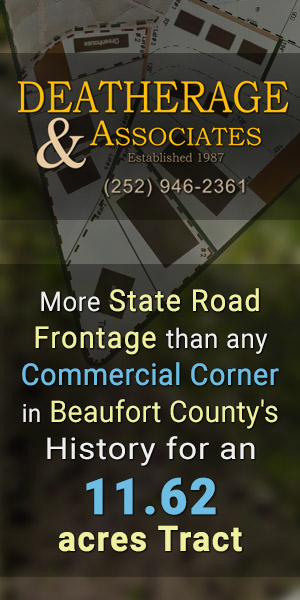The Shell Game of Corrupted Government Exposed
Another example of automation replacing a skilled craftsman
Typesetting is almost a thing of the past but it was a very skilled vocation for many years.
The city schools of Atlanta in the 1950's had a two-track tier. Students were exposed to the usual wide variety of subjects. I took Algebra, Latin, Economics, Biology, Chemistry and the usual history, English and civics classes. Bass High School also had a fully equipped set of shop classes. We had wood shop, electric shop, Typing, Metal shop and a fully functional print shop. The school was preparatory for college as well as training for those not destined for the halls of higher education.
The electric shop project was building a fully functional radio using vacuum tubes. We started out with simple circuits like buzzers, wire magnets and then moved on to medium circuits where we learned about resistors, capacitors and transformers, etc. The Metal shop taught metalworking, welding and oxy-acetylene welding and torch. The metalworking shop was on the backside of the building and the seniors would bring their hot rods up to the window and run the wire and torch hoses outside to work on their cars.
I took them all but my favorite was the print shop. The classroom had a several fully functionally printing presses of both manual one page at a time to a moderately fast multi page printer. The teacher (Victor Wall) was a typesetter for the Atlanta Journal and Constitution paper. The Journal was the afternoon paper and the Constitution was the morning edition. My memory is a bit vague but I think he worked the night shift and taught shop during the day.
 The first day of class, he handed out a sheet showing the arrangement of the type which was stored in a multi drawer roll around stand. Each drawer had a different font of type. The sheet was the layout of the type in the drawers.
The first day of class, he handed out a sheet showing the arrangement of the type which was stored in a multi drawer roll around stand. Each drawer had a different font of type. The sheet was the layout of the type in the drawers.
The layout is not in alphabetical order but in the order of the most used letters. The California Job Case is the standard layout based on years of trial and error. The most often used letters are in a cluster and the least used on the perimeter. Our first challenge was to memorize the layout and be prepared for the first quiz. Here is a picture of the layout.
Next, we learned the nomenclature and manufacturer of individual letter type. We were now at week three and had not seen or touched any ink. I thought this would be a hands-on class and was disappointed to learn that there was some brainwork required before they turned us loose with the presses.

Here is the California box with type ready for the composition.

Eventually we began learning the lay out of the print. It starts out with a composing stick. A composing stick is a hand held metal holder that you use to load and arrange the type. You load the type from left to right and upside down. The type is loaded one letter at a time with spacers between lines and letters. Most people are today are familiar with justified and centered type. It is automatic today with just the click of a button on the keyboard. Actual typesetting requires preplanning and careful attention to the spaces.

Once you get the paragraph laid out you transfer it to a form where is it blocked and set for the next section.
The details are too complicated for this short post but the process is fascinating and once we got into the actual hands on potion, I enjoyed the class immensely. Below is a picture of how it looks when you are laying out the type.


If you are having trouble reading this, here is a mirror image courtesy of Adobe Photoshop.

Upside down and backwards most d's and b's look alike. So does most p's and q's. It is rumored that is where the experessoin "watch you p's and q's" came from.
Mr. Wall had a slight drinking problem and kept a bottle of cough medicine in his bottom drawer. We all got a chuckle when he would have one of his coughing fits and have to take a swig of his medicine. He explained that he had inhaled too many fumes during his days at the paper.
I will say one thing for him thought. When you were finished with the composition stick, he would walk by, take one quick look, and tell you what mistakes you had made. He also could read the backwards and upside down, typeset as well as most people cold read regular print. He would take your composition stick and barely glance at it, then hand it back and say look at line two again.
This is just another example of automation making a craft skill almost obsolete. Today there are many clubs still using the old print methods. High quality wedding or social event invitations are still printed using the old typesetting method because it is hard to duplicate a solid impression using computers. There is something about an impression on paper that is hard to beat.
The final exam was a pamphlet that had a page for each student. We would do the layout, composition and final printing. Then we bound it into a booklet. I did not keep the booklet but it was the first published work I ever did. I do not remember the grade either. I may have inhaled too many fumes during the class.
Here is a quick three (3) minute video that covers both typesetting as well as old fashion book binding.
Click here to see the video
Go Back
The city schools of Atlanta in the 1950's had a two-track tier. Students were exposed to the usual wide variety of subjects. I took Algebra, Latin, Economics, Biology, Chemistry and the usual history, English and civics classes. Bass High School also had a fully equipped set of shop classes. We had wood shop, electric shop, Typing, Metal shop and a fully functional print shop. The school was preparatory for college as well as training for those not destined for the halls of higher education.
The electric shop project was building a fully functional radio using vacuum tubes. We started out with simple circuits like buzzers, wire magnets and then moved on to medium circuits where we learned about resistors, capacitors and transformers, etc. The Metal shop taught metalworking, welding and oxy-acetylene welding and torch. The metalworking shop was on the backside of the building and the seniors would bring their hot rods up to the window and run the wire and torch hoses outside to work on their cars.
I took them all but my favorite was the print shop. The classroom had a several fully functionally printing presses of both manual one page at a time to a moderately fast multi page printer. The teacher (Victor Wall) was a typesetter for the Atlanta Journal and Constitution paper. The Journal was the afternoon paper and the Constitution was the morning edition. My memory is a bit vague but I think he worked the night shift and taught shop during the day.
The layout is not in alphabetical order but in the order of the most used letters. The California Job Case is the standard layout based on years of trial and error. The most often used letters are in a cluster and the least used on the perimeter. Our first challenge was to memorize the layout and be prepared for the first quiz. Here is a picture of the layout.
Next, we learned the nomenclature and manufacturer of individual letter type. We were now at week three and had not seen or touched any ink. I thought this would be a hands-on class and was disappointed to learn that there was some brainwork required before they turned us loose with the presses.
Here is the California box with type ready for the composition.
Eventually we began learning the lay out of the print. It starts out with a composing stick. A composing stick is a hand held metal holder that you use to load and arrange the type. You load the type from left to right and upside down. The type is loaded one letter at a time with spacers between lines and letters. Most people are today are familiar with justified and centered type. It is automatic today with just the click of a button on the keyboard. Actual typesetting requires preplanning and careful attention to the spaces.
Once you get the paragraph laid out you transfer it to a form where is it blocked and set for the next section.
The details are too complicated for this short post but the process is fascinating and once we got into the actual hands on potion, I enjoyed the class immensely. Below is a picture of how it looks when you are laying out the type.
If you are having trouble reading this, here is a mirror image courtesy of Adobe Photoshop.
Upside down and backwards most d's and b's look alike. So does most p's and q's. It is rumored that is where the experessoin "watch you p's and q's" came from.
Mr. Wall had a slight drinking problem and kept a bottle of cough medicine in his bottom drawer. We all got a chuckle when he would have one of his coughing fits and have to take a swig of his medicine. He explained that he had inhaled too many fumes during his days at the paper.
I will say one thing for him thought. When you were finished with the composition stick, he would walk by, take one quick look, and tell you what mistakes you had made. He also could read the backwards and upside down, typeset as well as most people cold read regular print. He would take your composition stick and barely glance at it, then hand it back and say look at line two again.
This is just another example of automation making a craft skill almost obsolete. Today there are many clubs still using the old print methods. High quality wedding or social event invitations are still printed using the old typesetting method because it is hard to duplicate a solid impression using computers. There is something about an impression on paper that is hard to beat.
The final exam was a pamphlet that had a page for each student. We would do the layout, composition and final printing. Then we bound it into a booklet. I did not keep the booklet but it was the first published work I ever did. I do not remember the grade either. I may have inhaled too many fumes during the class.
Here is a quick three (3) minute video that covers both typesetting as well as old fashion book binding.
Click here to see the video






















